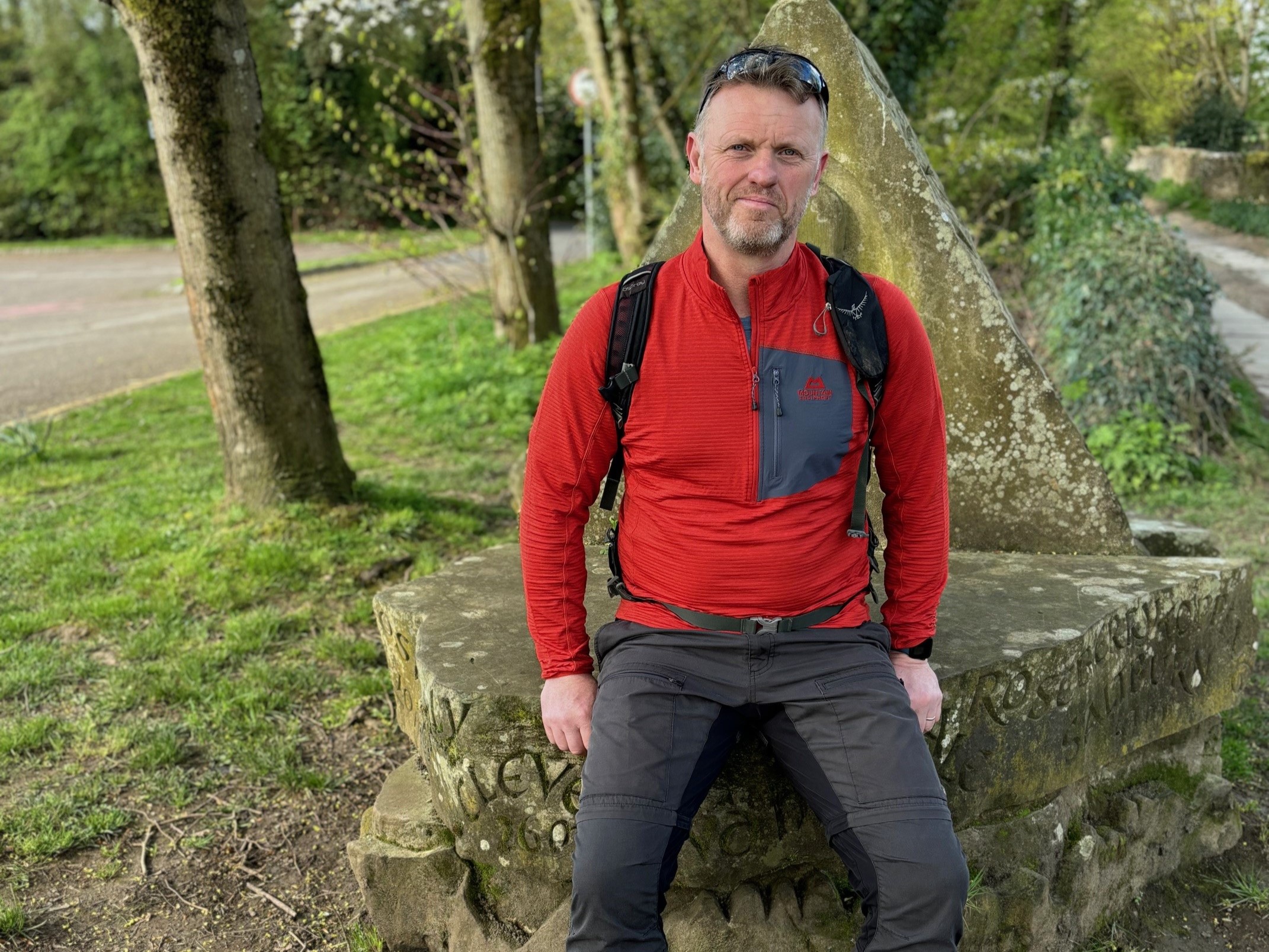CEO explores the Cleveland Way
By Ashley Toft – CEO KE Adventure and Mickledore Travel
Why the Cleveland Way, and why in April?
Our kids have (almost!) left home, so my wife Louise and I thought we’d take the opportunity to visit a part of the UK that we don’t know at all well, and test our walking fitness over 8 days on the Cleveland Way in Yorkshire. The combination of stunning heather moorland with far-reaching views and rugged coastal scenery, studded with picturesque fishing villages looked fantastic, especially as there is so much of historical interest to see along the way.
So we booked a walk from Helmsley to Robin Hood’s Bay, leaving mid-April, the last week of the Easter holidays at the school where Louise teaches. We were some of the first Mickledore clients to travel this year, and we went with the expectation that the weather would be ‘varied’ in North Yorkshire at this time of year. But also that it would be quiet on the trails and that we’d have the towns, villages and historical sites largely to ourselves.
Having been on many guided group adventures over the years, this was our first self-guided holiday, so a whole new experience. And the more we thought about it as we were getting ready, the more it seemed like such a luxury, having accommodation booked every night, and our bags transported from A to B each day.
One of the questions we both secretly asked ourselves (as we found out on the last day of the walk) was would we still be talking after 8 days of walking together, and what would we find to talk about? We both had our headphones tucked away in our daysacs just in case!
Helmsley & Rievaulx Abbey
Helmsley is a beautiful market town, based around a central square, which is where our lovely hotel (The Feathers) was located for the first 2 nights of the holiday. Accommodation is generally planned to allow Mickledore clients to walk from one hotel or guesthouse to the next. But even this early in the season, the second night’s accommodation was full (our fault for booking so late!), so we agreed to have 2 nights in The Feathers Hotel, which meant a taxi transfer at the end of the first day, and back to the start of the walk the next day. This was all booked by the team at Mickledore and worked seamlessly. It also gave us the chance to get to know Helmsley a bit better. It was the gorgeous sand-coloured Yorkstone used to build so many of the buildings in the town (and surrounding villages), including our hotel, that really caught my eye. With its imposing castle, and historic walled garden, Helmsley has a lovely feel to it, and is a great starting point for our walk. It also has one of the best delis that I’ve been to (Hunters), right in the middle of the Market Square; a great place to stock up on handmade sandwiches, ciabattas, quiches, pies and cakes for packed lunches.
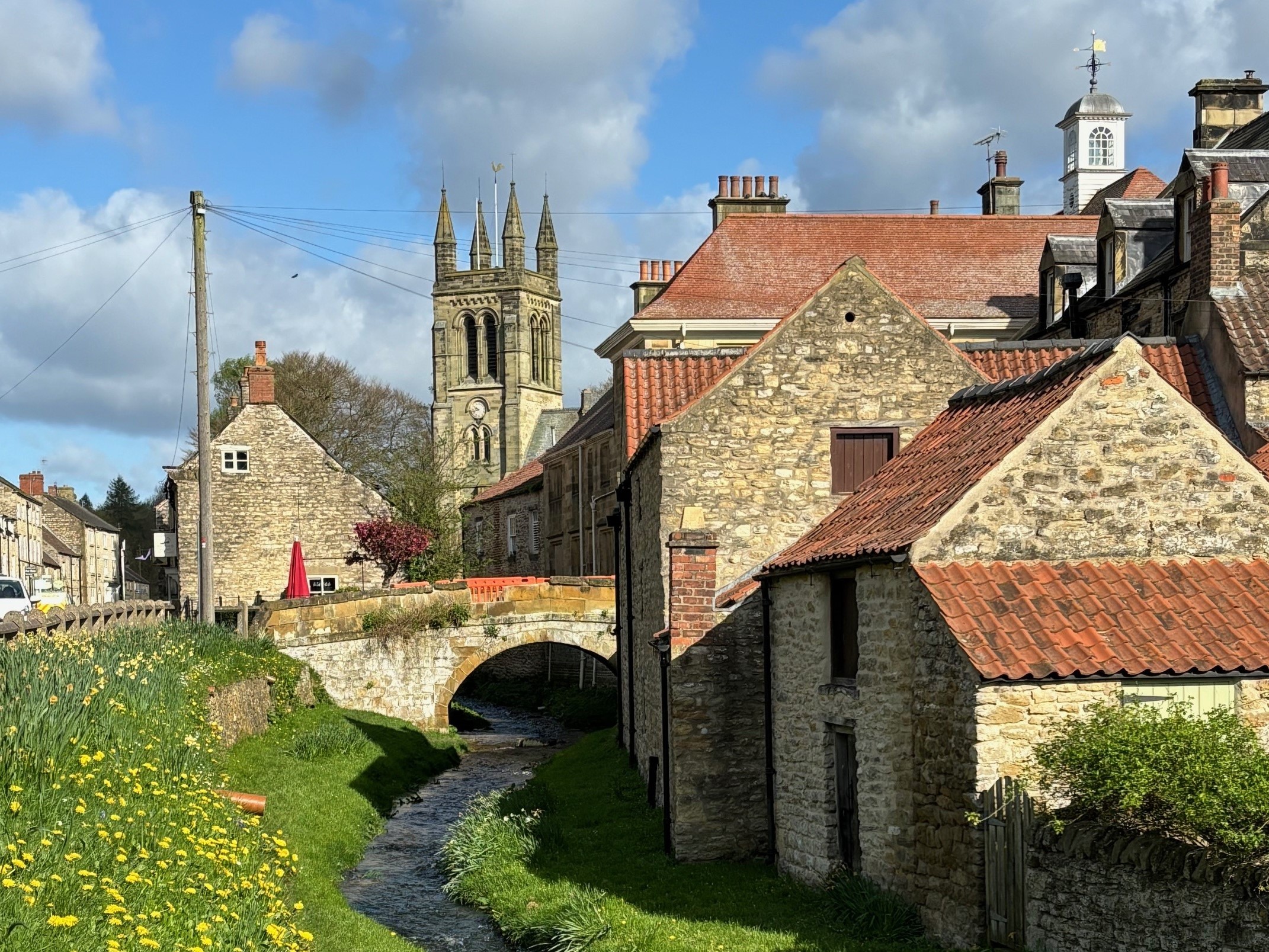
Helmsley is the start of the Cleveland Way, so we pass the trail sign (Filey 109 miles) and the first Cleveland Way stone. A gentle climb through fields gave us a great view back over Helmsley, then it was up and down through woodland, and after an hour we reached the lovely stone-arched bridge over the River Rye. From here it’s about 500 metres off the trail up a country lane to the stunning Cistercian abbey of Rievaulx.
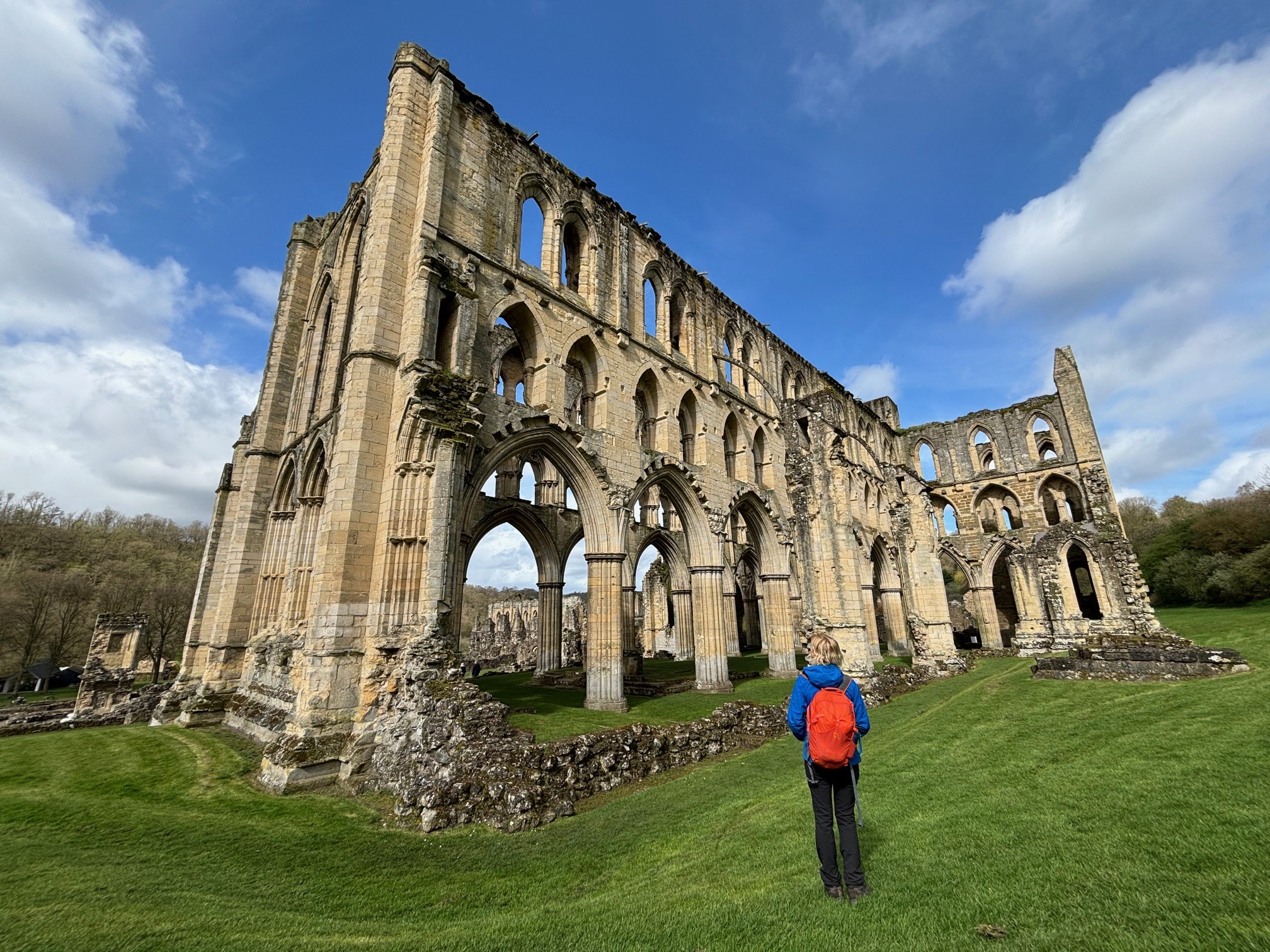
Originally dating back to the 12th Century, it was a large and impressive building in its day, at one time housing 600 monks, before the Dissolution of the Monasteries by Henry VIII some 400 years later. It’s still an impressive sight today, with its ornate pillars, high arches and gorgeous rural setting. There are many stone carvings and other artefacts to be found in the museum, and audio guides are available to guide you through. This is a real gem of a site, and in some ways it’s a shame it’s so early on in the walk. It’s worth considering getting English Heritage membership in advance too, as there are several historical sites on this walk where membership affords you ‘free’ entry.
Walking the Moors
The walking the next few days was incredibly varied. Skirting the southern edge of the North York Moors on the first day after our visit to Rievaulx, we walked through fertile arable fields, copses and along forest tracks, crossing babbling brooks and passing stables and canter tracks at the home of the Yorkshire Thoroughbred at lovely Hambleton, before reaching Sutton Bank, and then south to our first taxi pick-up at Kilburn.
The second day was mostly along the stunning escarpment running north from Sutton Bank, with far reaching views across the Vales of York and Mowbray below us. According to James Herriott, it is ‘the finest view in England’! At times it was bleak walking through the dark heather of the moors, and at one point it did snow briefly, but then the sun came out, and everything seemed more vibrant, including the views across the patchwork of fields and villages below. Descending through the Thimbleby Estate, we reached picturesque Osmotherley by mid-afternoon, and the Golden Lion, a lovely old pub, and our home for the night. I was surprised to see the bar so full of people that evening; a lovely mix of visitors, walkers and locals. A fire, great local beer, and a top-notch meal all helped make it a wonderful place to relax and unwind after a full day of walking.
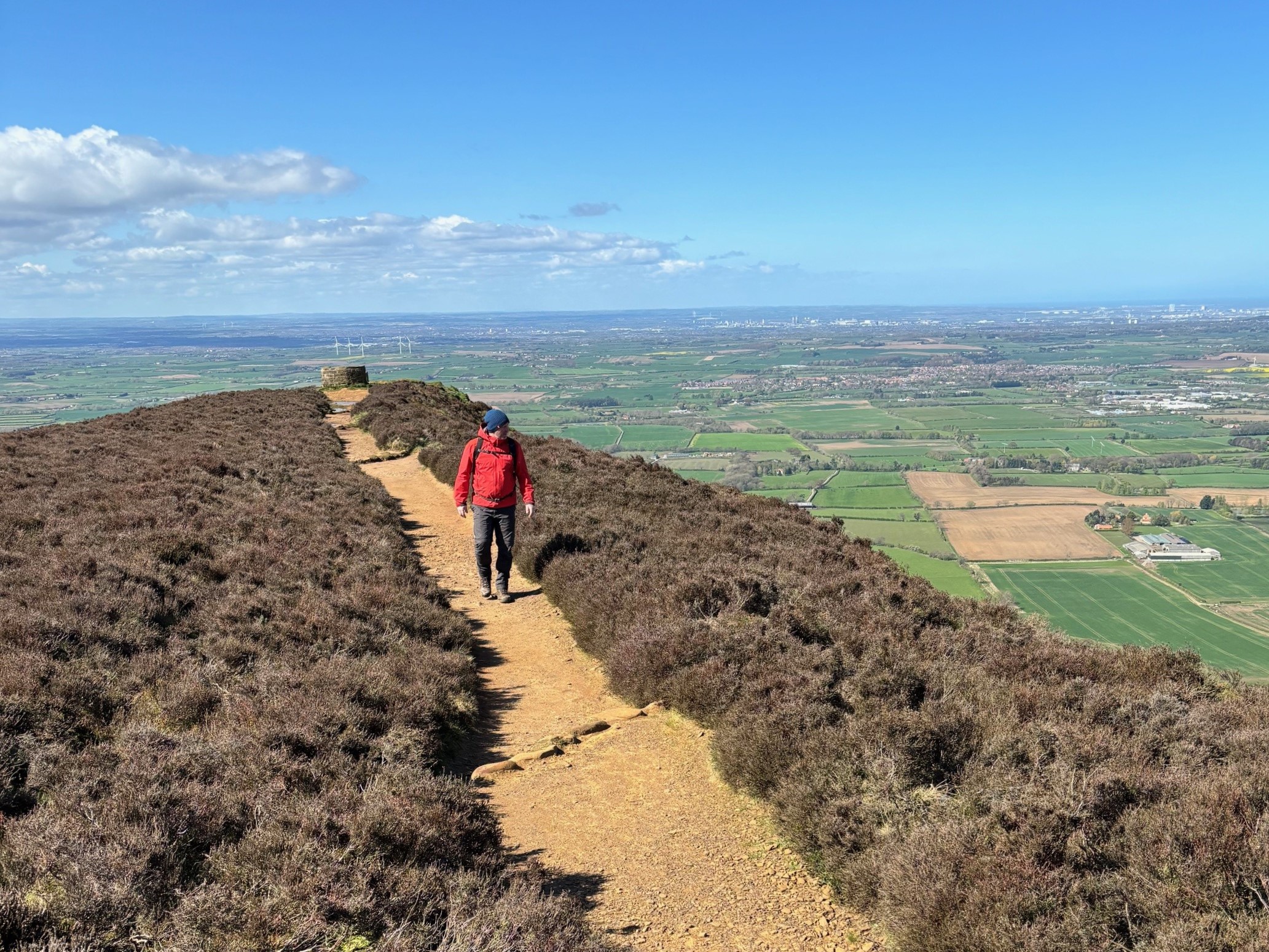
Our third day of walking was particularly memorable, as we had clear blue skies and stunning far-reaching views. And from the stone seat at Cringle Moor we got our first views of Middlesborough and the Tees Estuary. It was also the toughest day of the walk with more than 900 metres of ascent, and some fairly steep climbs and descents, much of it on stone steps. The final climb of the day took us to Wain Stones, unusual carved rock formations where the rock climbers and boulderers were out doing their stuff. From there it was a steep descent to the road at Clay Bank where we were met by the manager of the aptly named Wainstone Hotel, where we stayed overnight in nearby Great Broughton.
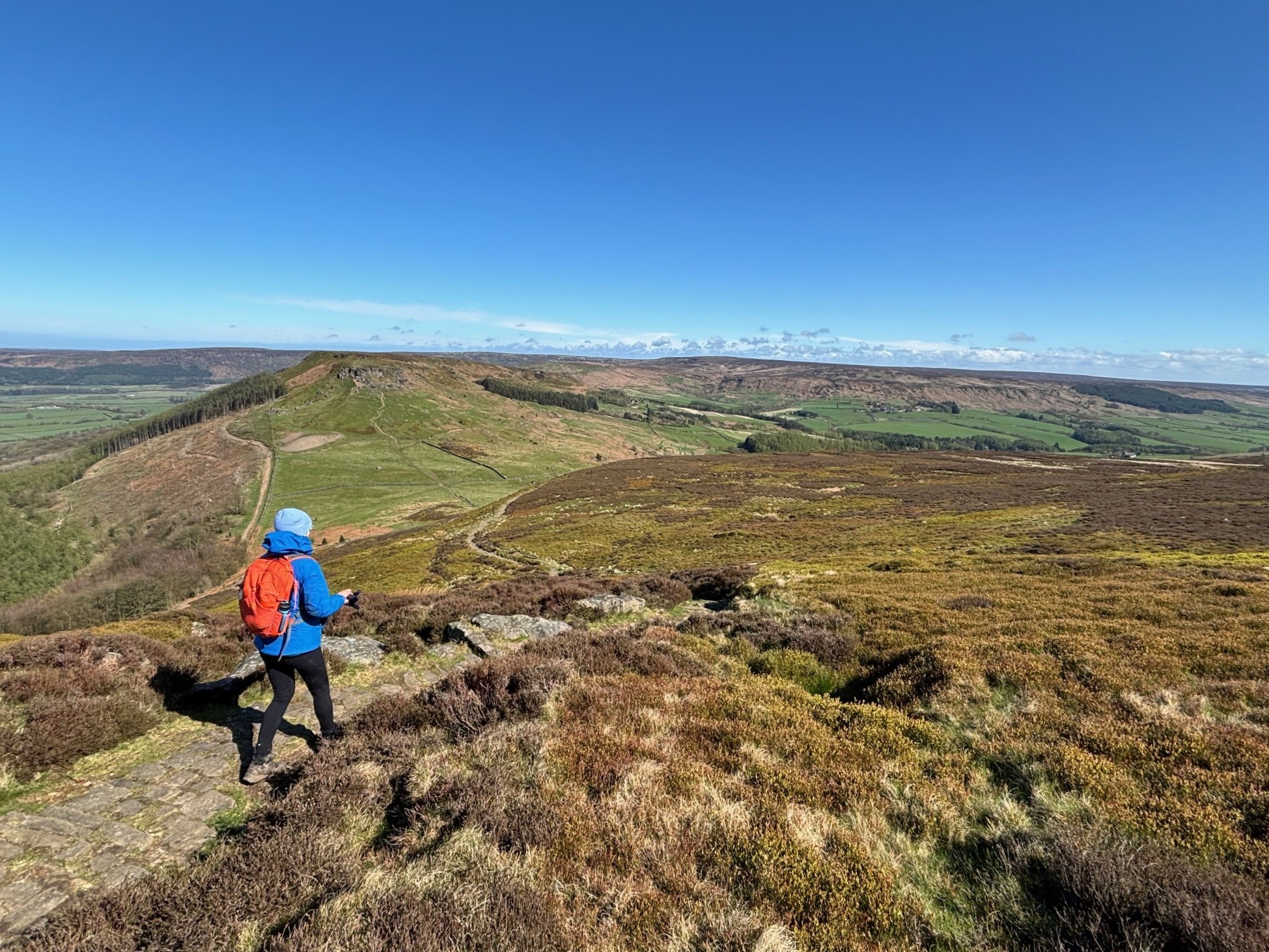
It was a steep start the following morning, taking us straight up to Urra Moor and the Round Hill Cairn (454m) which is the highest point on the North York Moors and on the Cleveland Way. So much of what we saw on this walk (and especially on this day) tells the story of the area’s industrial past, from remnants of old railways serving the ironstone mines, to boundary stones and memorials to landowners from a bygone era. We hardly saw any other walkers today, but were accompanied throughout by red grouse, golden plover and a multitude of other moorland birds, all nesting in the heather, and laying their eggs at this time of year. The last climb today took us up on stone steps through the Pale End Plantation to a high point on Easby Moor where the Captain Cook monument comes into view. It’s an imposing structure; an obelisk constructed of local sandstone bricks. It was built in 1827 in memory of the great circumnavigator, who grew up on a farm in Great Ayton, the village just below us as we look down from the escarpment, and our home for the night.
We descended the track to Gribdale Gate where we met our friendly taxi driver Rob. He owns Ayton Taxis, and was a font of knowledge about the local area, and told us many a story of previous Mickledore walkers! 10 minutes later we arrived at the Royal Oak right in the middle of Great Ayton; another lovely old pub where we enjoyed a great meal and comfortable night.
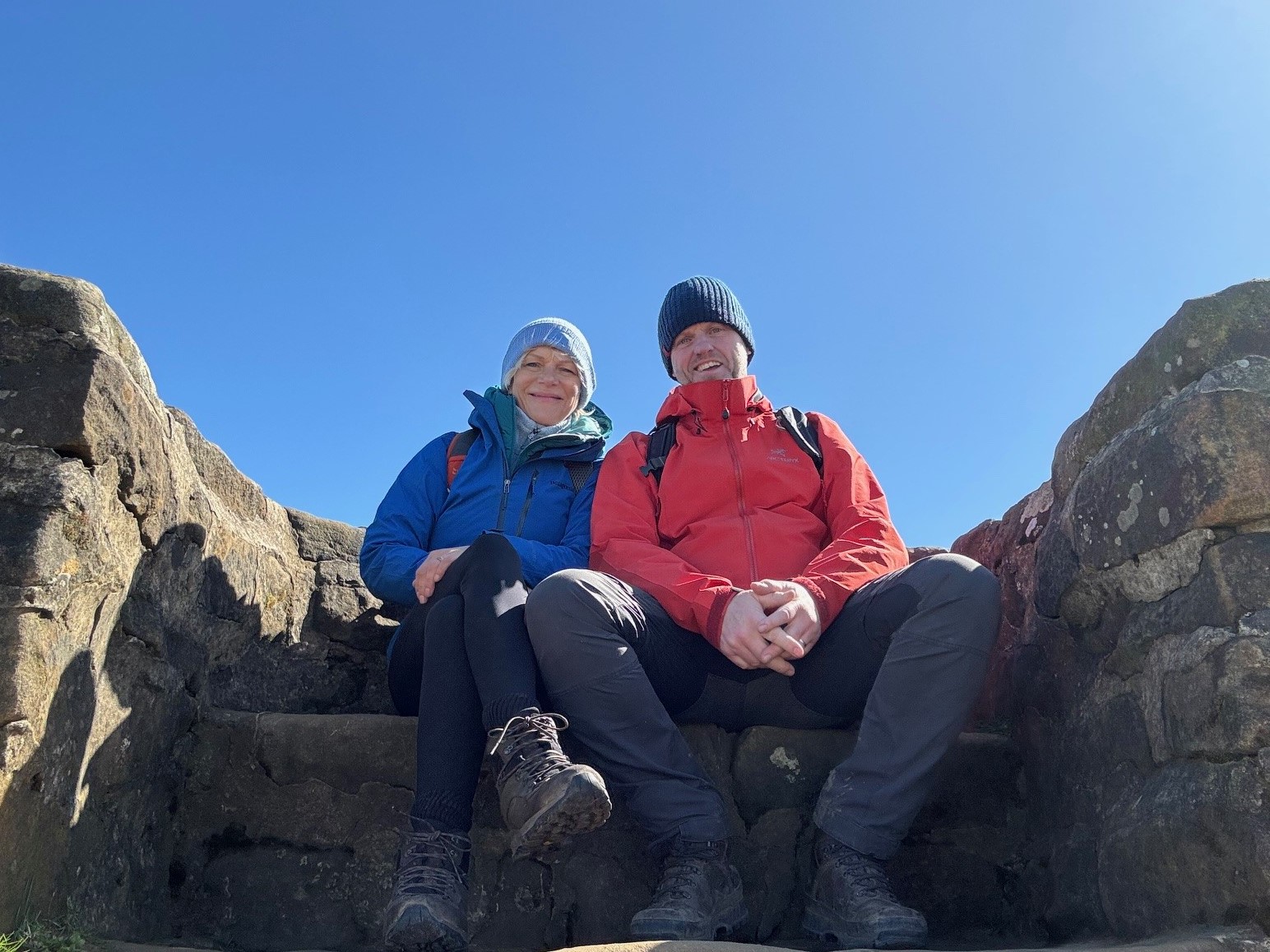
Our first 4 days of walking have all been 19-20kms (approx 12 miles) and even with a fairly relaxed start each day, we have been reaching our accommodation between 3-4pm, allowing for a stroll around the area or time to relax and reflect on each day’s walk.
Heading for the coast
The next couple of days were shorter as we made our way north-east towards the coast. On day 5 (13.7kms) we took the one hour detour off the Cleveland Way to Roseberry Topping, the prominent and unusually shaped hill affectionately known as the ‘Yorkshire Matterhorn’ because of its half-cone shape and jagged limestone cliffs. Formed by the collapse of part of the hill in 1912, due to a geological fault, and possibly exacerbated by the nearby alum and ironstone mining, the view from the top was simply stunning.
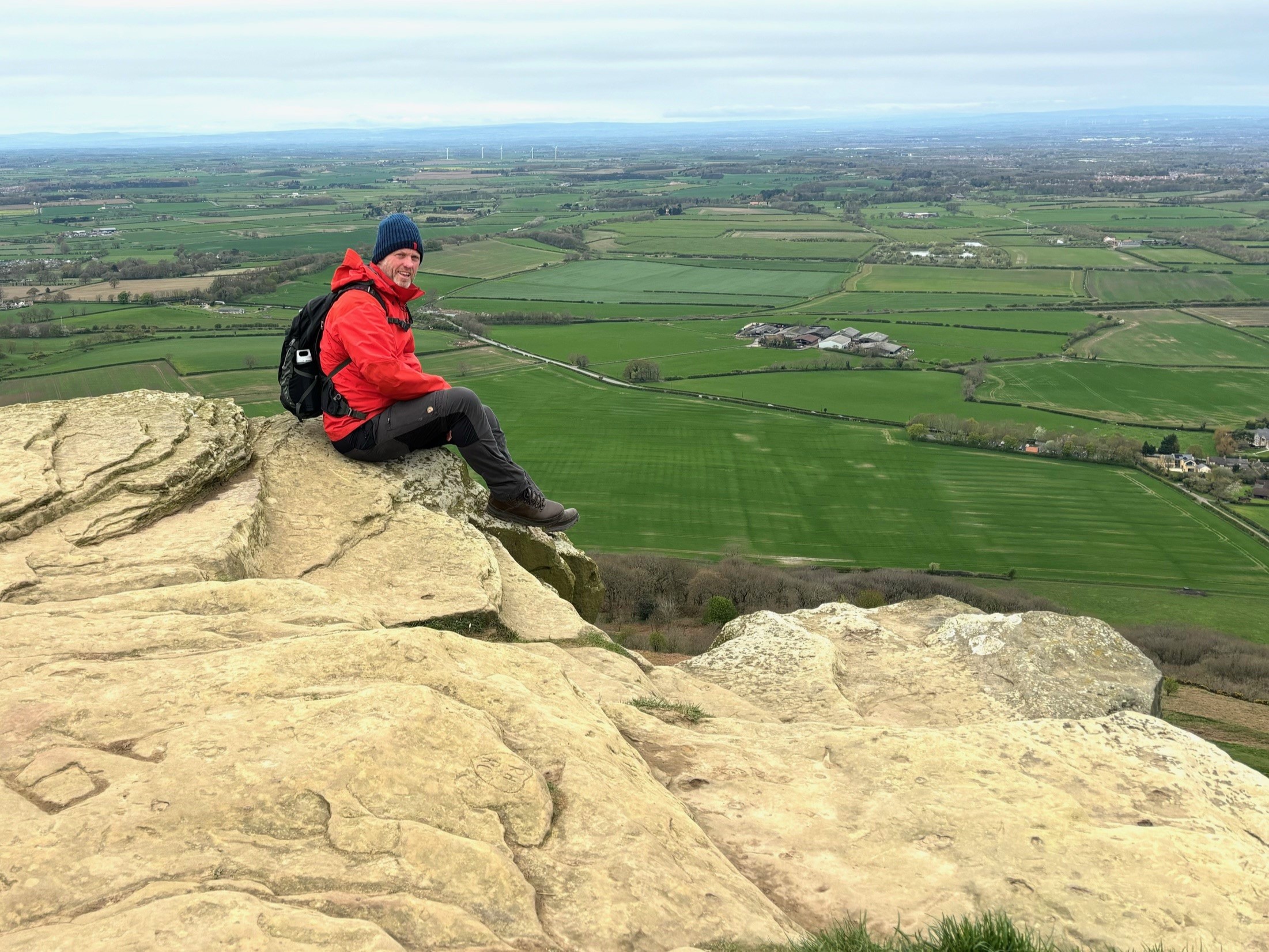
We arrived in Guisborough in time for lunch; a lovely market town with remains of an impressive gothic priory, the remaining structures dating back to the 14th century. Then made our way to Guisborough Hall where we’d be staying for the night. Dating back to the 1850s it is an impressive country house, and now a 4 star hotel, with a real stately home feel to it. I have to say I felt slightly under-dressed! Louise had pre-booked a massage, which she said was fantastic, and we had a great meal in the De Brus Bar and Grill in the hotel, and enjoyed the impressive spread that was breakfast the following morning in The Chaloners fine dining restaurant.
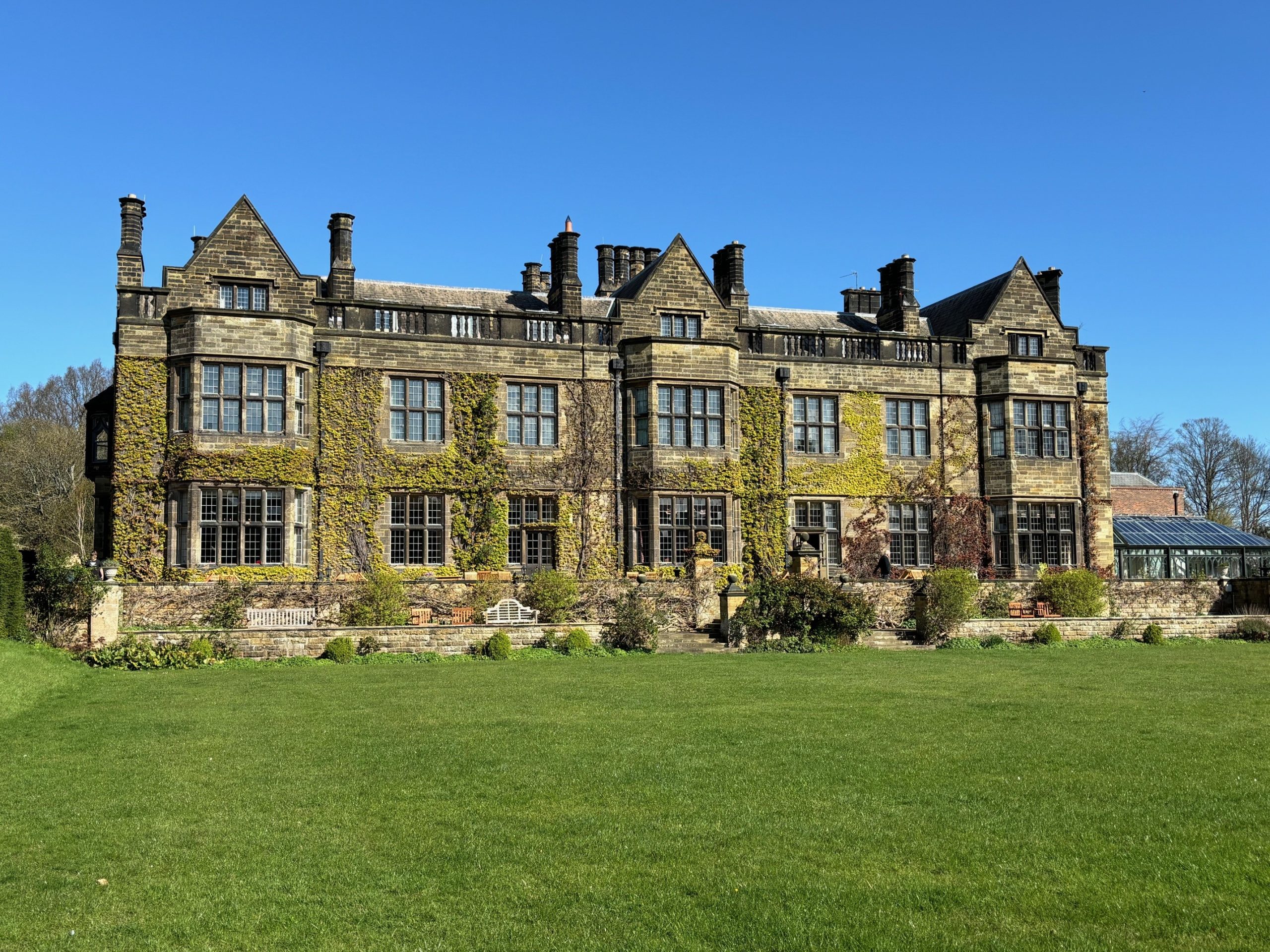
Our shortest day (10.5kms) took us uphill from Slapewath through woodland to open arable fields, then it was a gentle downhill through Skelton-in-Cleveland, through Crow Wood with its bluebells and wild garlic, and under the impressive red brick Skelton Viaduct to Saltburn-by-the-Sea. Walking towards the sea we pass many impressive Victorian seaside houses, guesthouse and hotels, before reaching a viewpoint across the sands.
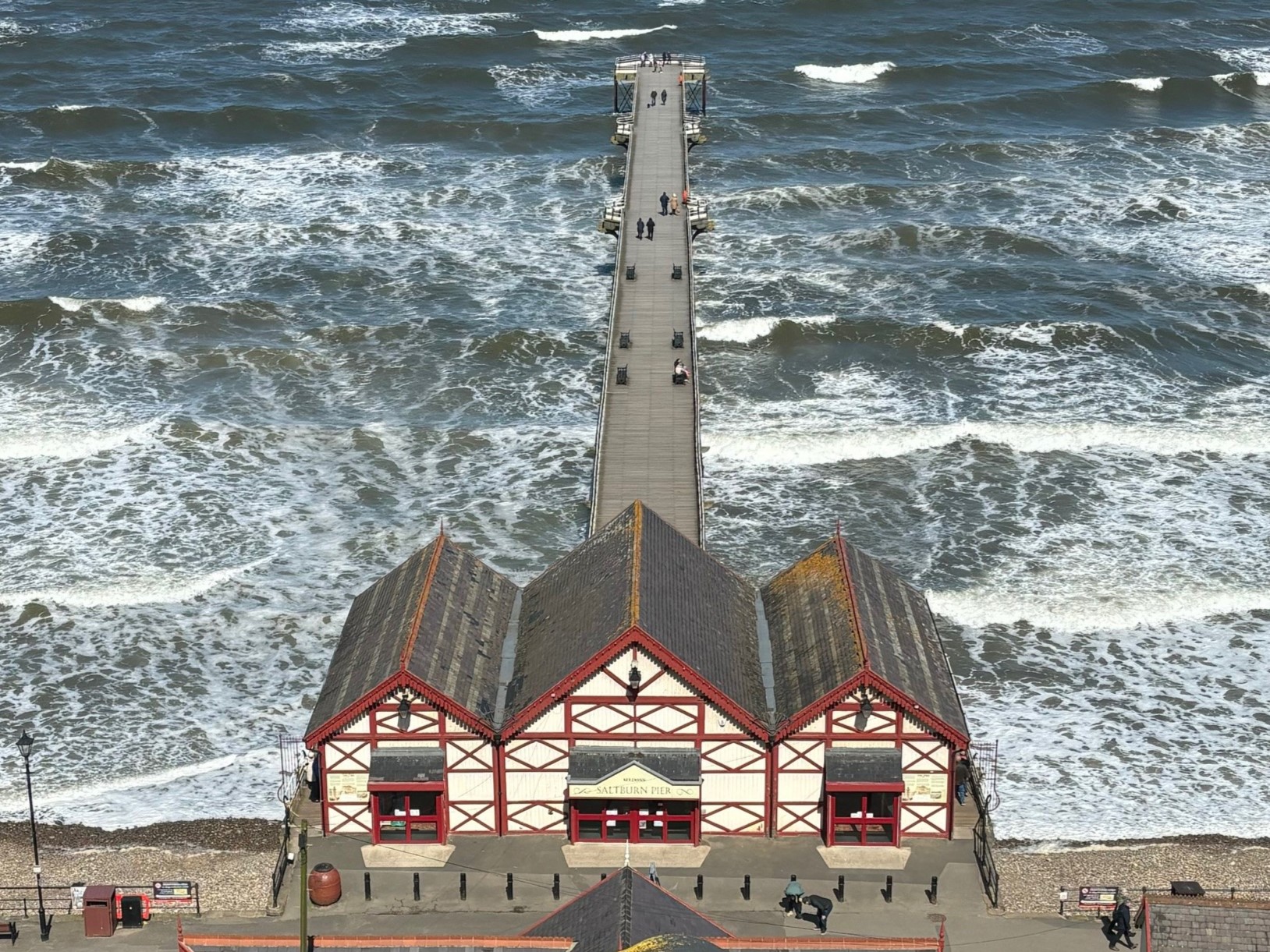
We’re too early to check-in to the Spa Hotel, which has that same impressive view, so it’s time to check out the cliff tramway and pier and take a stroll along the sands. The cliff tramway is the oldest water balanced funicular still in operation in the country, dating back to 1884. Unfortunately a fire in the lower station meant that it was closed temporarily when we were there, but it was still an impressive sight. The old pier is equally impressive and afforded lovely views back up to the seaside town above, and along the extensive sands in both directions.
We checked in at the Spa Hotel, which has been recently refurbished and is really lovely, before heading down to the Ship Inn, the oldest pub in town (dating back to the 1500s) and once the centre of the smuggling trade along this coast. The location right on the beach is superb, and the beer equally good! Our meal this evening was in the new restaurant at the hotel with amazing views across the bay.
Walking the coastal path
The last 2 days or our walk saw us heading south from Saltburn on the coastal path, with a night at Runswick Bay and finishing in Robin Hood’s Bay.
Climbing steeply out of Saltburn we were soon on the cliff path, enjoying the sea air, and dramatic views. And there was quite a cacophony from the birds (mostly kittiwakes) nesting in the cliffs below us.
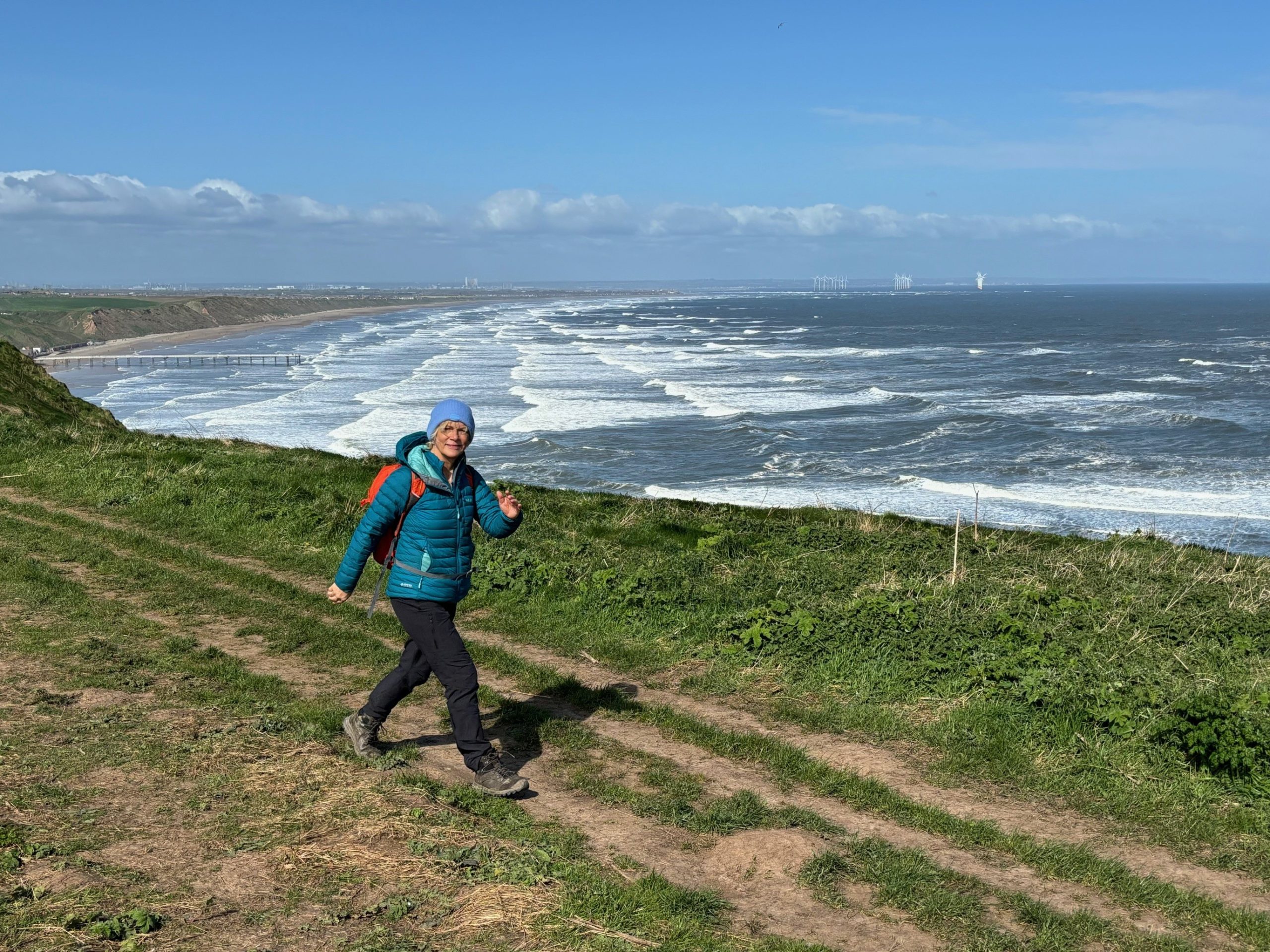
The railway that we followed in the morning still serves the potash mines at Boulby, which incredibly, cover an area of over 1000kms, most under the sea. 20 minutes later we descended the trail into Staithes, a beautifully picturesque fishing village with a river (Staithes Beck) running through, and a harbour with the only RNLI station along this part of the east coast. Houses are piled high on the hills surrounding the harbour with cobbled streets & footpaths running between them. A quick cup of tea at Dotty’s Tearoom, then we continued on, around the next headland to Runswick Bay. Our accommodation tonight is the Runswick Bay Hotel which is right on the Cleveland Way above the old village. As always our bags are waiting for us, so we grab a quick shower, then its down the steep (1 in 4!) road to the old village and beach. It’s stunningly beautiful, and we walk through the labyrinth of tiny cobbled paths, and marvel at the view along the long sandy beach. We enjoy a quick drink at the Royal Oak pub before climbing back up the hill to our pub/hotel for a meal, and a good chat with some of the locals, most of whom live at the top of the hill these days.
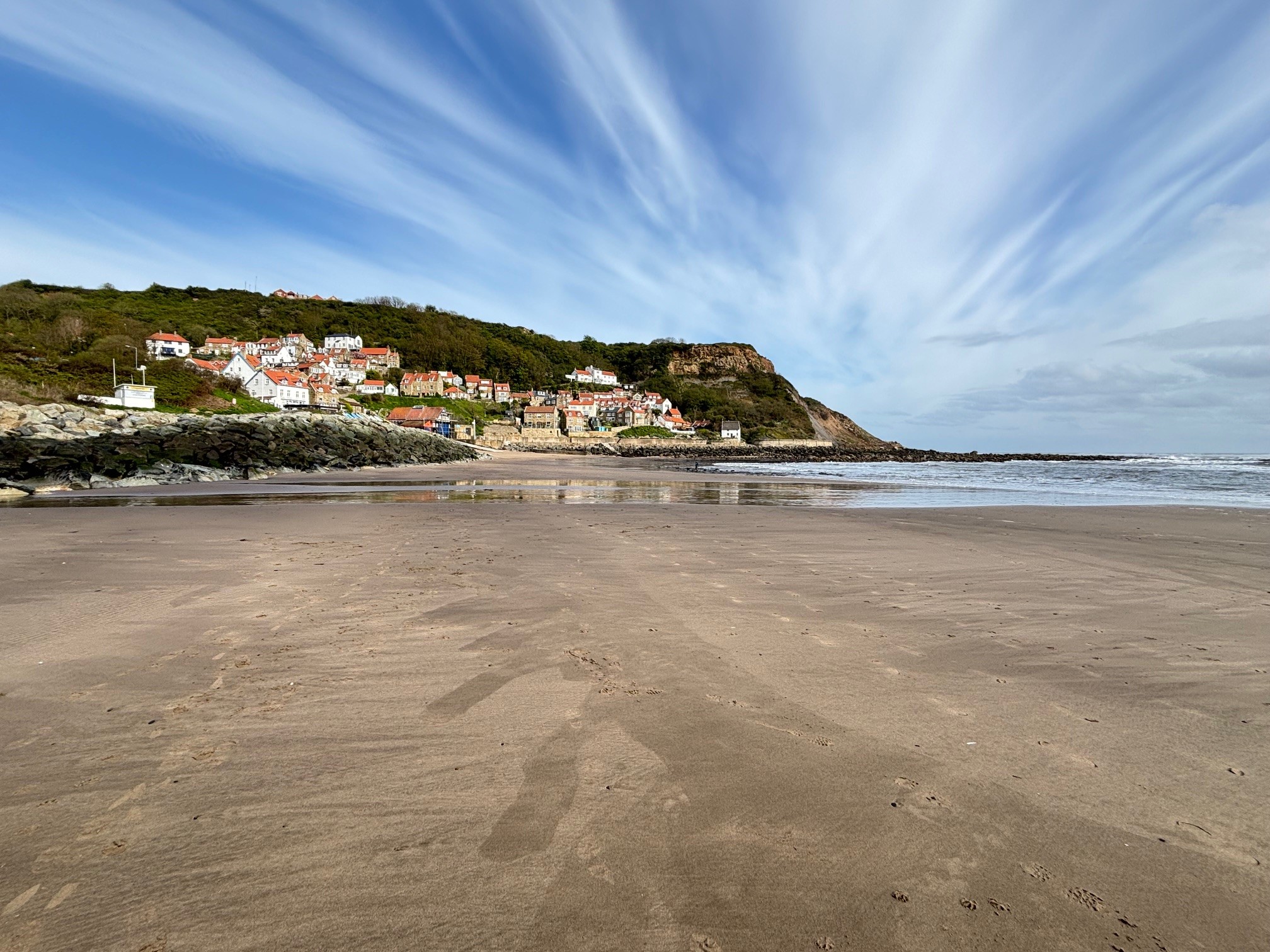
The next day is our last day of walking, but also our longest (26kms), so we need to keep moving. We head back down to the old village, then along the beach for about 1km before climbing through a gulley back on to the clifftop path. The view back across Runswick Bay is spectacular. We pass another ironstone mine this morning at Kettleness, and follow sections of the railway that served the old alum mines at Deepgrove. Here we explored the quarry waste that has formed a weird and wonderful moonscape between the cliffs and the sea, before continuing to Sandsend. We grabbed a quick coffee at the wonderfully named Wits End Café, then started off along the beach towards Whitby at the far end.
Arriving in Whitby on a busy, sunny Sunday afternoon was a bit of a shock to the system after the solitude of the trails over the last week. We enjoyed the panoramic view across the town from the Captain Cook statue, which is also a great place for people watching. Walking through the town down to the swing bridge past the amusement arcades, fish and chip shops (there are lots!) and crowds of people (including the many goths who regularly gather here), was a bit of an attack on the senses. Soon we had crossed the bridge and were climbing the famous 199 steps up to a carved stone cross, then past Mt Mary’s Church to Whitby Abbey (again, bring your English Heritage membership card if you have one and wish to visit).
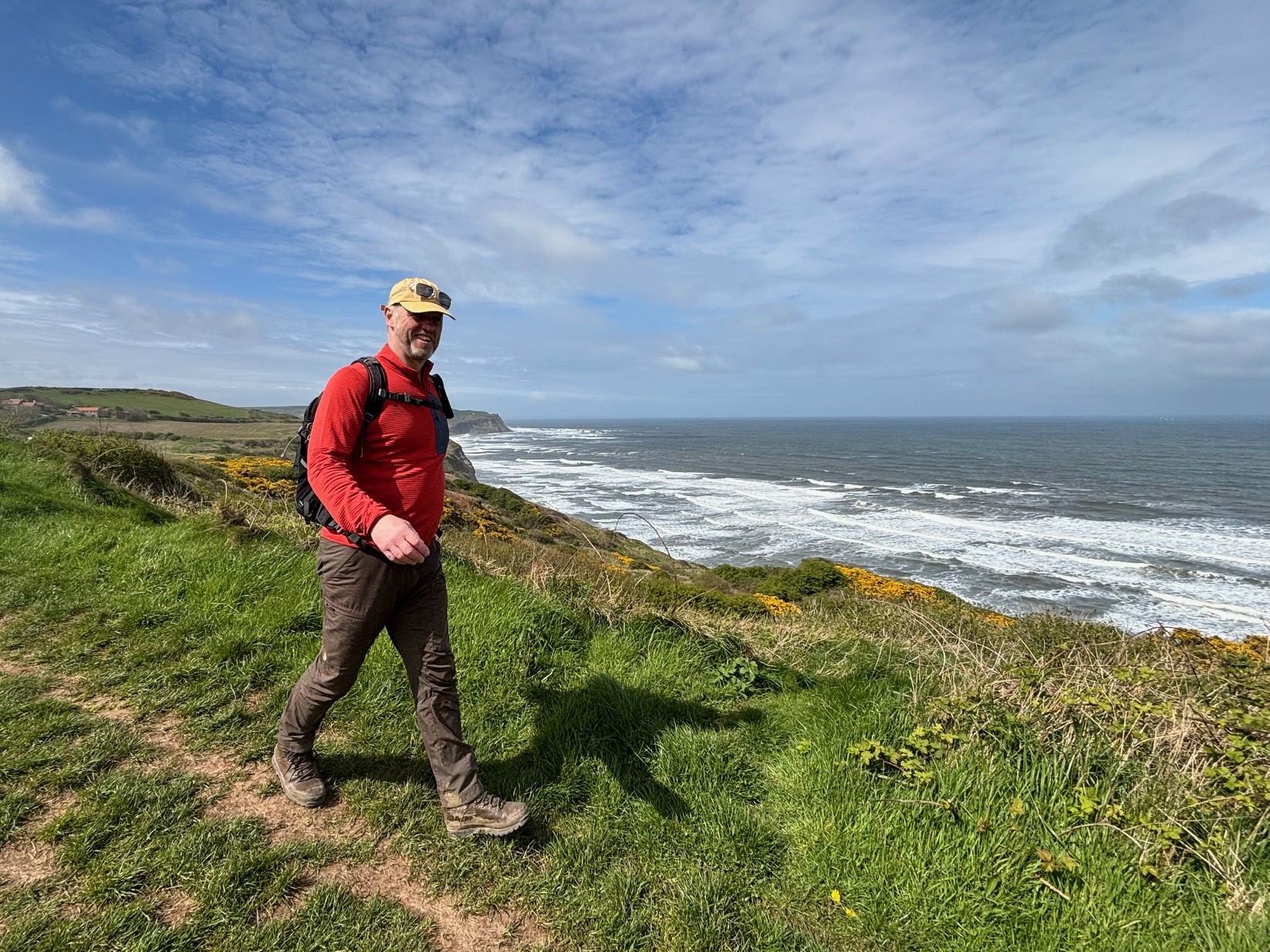
Striding out along the cliffs once more, the Cleveland Way clings to the cliff edge all the way into Robin Hood’s Bay. At around 5pm we arrived at the Victoria Hotel, the last building before the road descends to the old village and harbour below. This was my favourite hotel on the whole trip; a classic, quite old fashioned but classy establishment with dark oak-panelling and great service and views!
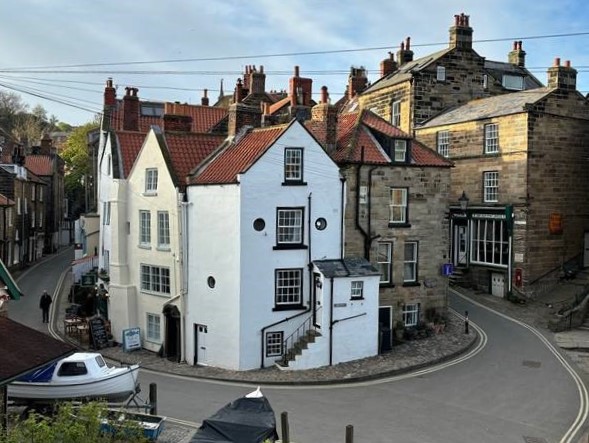
After checking in we ventured down to the old village and harbour. Again it was very beautiful with its multitude of old fishing houses and inns and cobbled streets and paths. It was a privilege to visit when it was all so quiet at this time of year.
We finished the day with a lovely meal at the Victoria Hotel, and reflected on a great week of walking. We also toasted the fact that we’d found plenty to talk about and catch-up on. Also that the headphones hadn’t come out once!
A taxi picked us up in the morning to take us back to Helmsley, and the driver told us that he has been able to trace his family back to living in Robin Hood’s Bay for at least 400 years, and probably much longer. Wow!
If Ashley and Louise have inspired you to walk the Cleveland Way email us [email protected] or call us on 017687 72335 to speak with one of our walking holiday experts. We offer 3 itineraries over the entire length of the route from 7 to 11 days, and we have 3 shorter breaks, with mainly 5 days walking, covering the moorland section, the coastal section, and finally a bit of both. Each of the holidays have dog-friendly options.
Ashley is CEO of both Mickledore and our sister company KE Adventure who offer over 360 active adventures in almost 100 countries worldwide.
